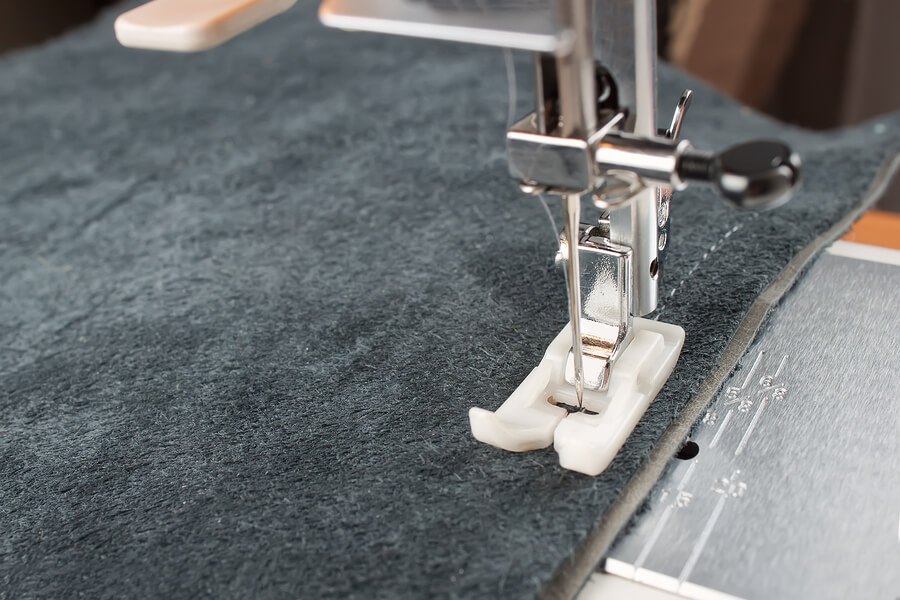Tips and Techniques for Sewing Leather

Leather is a type of fabric that is always in style to some degree but it has been showing up in more fashions than ever before. The material that is most often seen to make outerwear is being combined with other types of fabric to make tops, bottoms, and dresses for all types of unique looks. Granted, sewing leather can be challenging but it is manageable if you know what to expect and how you can prevent making mistakes. When working with leather, you don’t get a second chance to get it right. Once the needle has gone through the fabric, the hole is there and there is no making it go away. Follow these tips and techniques for sewing leather - real and faux - to get the desired results the first time!
· Fit Before You Start – Do your measuring and fitting before you sew the leather fabric together and find out you need to let it out. If you have any doubt about the fit, err on the side of making it a little too big so any stitches will be on the inside of the garment once you take it up.
· Think Clips, Not Pins – Just as sewing machine needles leave holes in the leather, so will pins. Instead of pins, use paper clips or quilting clips that will hold the layers together without doing any damage. Don’t use tape, either, as it may stick to the surface and damage the fabric.

· Use a Leather Sewing Machine Needle- A specialty needle that is made for sewing leather is made with a wedge point so that it makes a smaller perforation in the material. Use one of these needles whether sewing real or faux leather.
· Reverse Pattern Pieces – Normal fabrics are folded when cutting out so that double pieces that go on each side are cut in the right direction. With leather, the thickness and the irregularity of the shape of real leather work better if you cut out in a single layer. If you do, make sure you reverse the pattern for the second piece. Otherwise, you will be left short!
· Limit Markings to the Wrong Side – If you need to transfer markings to the fabric, do it on the back side. Use chalk or a soft market and avoid transfer wheel that could leave holes.
· Be Cautious with Glue – Leather seams and hems are often glued down to prevent bulk. No finishing is required so getting these areas to lay flat is your primary goal. Use fabric or leather glue made for this purpose and be careful not to spill or smear on the surface of the leather. Other types of glue can expand and harden, making an irregular finish to the seam. Press down firmly to ensure a flat finish after gluing.

· Use the Right Foot – If your machine includes a Teflon foot, this is the best choice for sewing leather. A roller foot is also a good option and can be identified by the small cylinder in the foot that rolls around as it goes across the fabric. If neither option is available, place a piece of clear tape securely on the bottom of your regular foot to prevent it from sticking to the fabric.
· Choose the Right Fabric – Whether sewing with real or faux leather, opt for those that are of the lightest weight. This is especially important when combining with other lightweight fabrics or sewing full garments like gathered skirts that you don’t want to be too heavy. It will also prevent you from having any problems sewing that you might have with thicker fabric.
If you don’t have a fabric shop near you that carries real leather fabric, there are options for leather in a wide range of colors online. Keep in mind that minor flaws in the material are natural and part of the beauty of the fabric but there should not be any damage that creates weak spots in the material. Purchase from a reputable dealer with a positive track record to ensure you get the quality that they guarantee. As an alternative, you may want to try your hand at sewing less expensive faux leather before you give the real thing a try!

